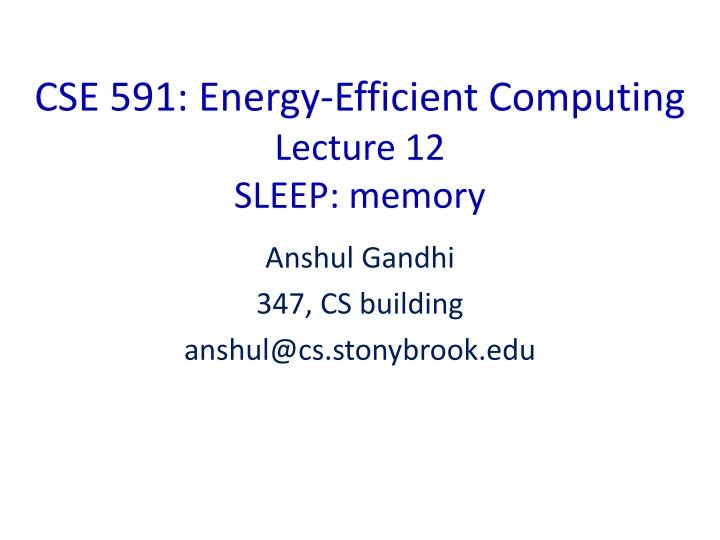
Energy-Efficient Computing Lecture Highlights: Memory Management, Power Consumption, and Policies
Delve into the realm of energy-efficient computing with insights on memory power management, processor-memory architecture, power consumption breakdown, and dynamic vs. static policies. Explore strategies for optimizing power usage, memory hierarchy, and addressing latency issues through innovative solutions in this informative lecture.
Download Presentation

Please find below an Image/Link to download the presentation.
The content on the website is provided AS IS for your information and personal use only. It may not be sold, licensed, or shared on other websites without obtaining consent from the author. If you encounter any issues during the download, it is possible that the publisher has removed the file from their server.
You are allowed to download the files provided on this website for personal or commercial use, subject to the condition that they are used lawfully. All files are the property of their respective owners.
The content on the website is provided AS IS for your information and personal use only. It may not be sold, licensed, or shared on other websites without obtaining consent from the author.
E N D
Presentation Transcript
CSE 591: Energy-Efficient Computing Lecture 12 SLEEP: memory Anshul Gandhi 347, CS building anshul@cs.stonybrook.edu
Memory Power Management Two low-power states: Self-refresh and power-down Data placement (concentrate active data and new pages) Memory address mapping (striping vs. single device) Memory compression (can reduce memory capacity)
Static Policies All chips active all the time (AlwaysOn) All chips transition to a fixed low-power state when idle standby nap powerdown What is missing from these policies?
Dynamic Policies Active when idle Transition to next lower level if idle for threshold time High threshold issues? Low threshold issues? Exploit locality of reference Sequential first-touch
